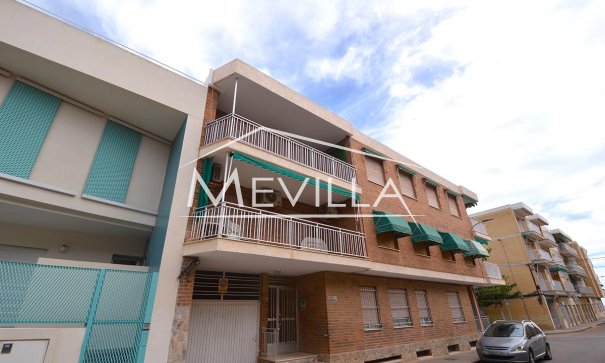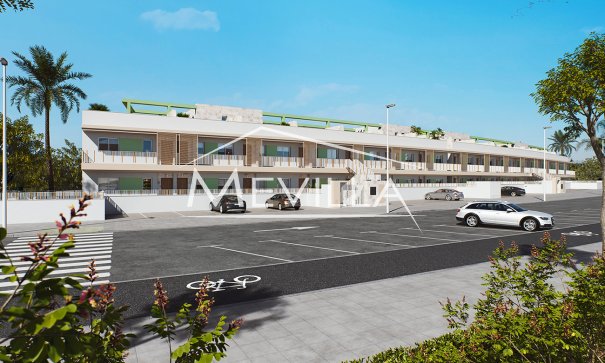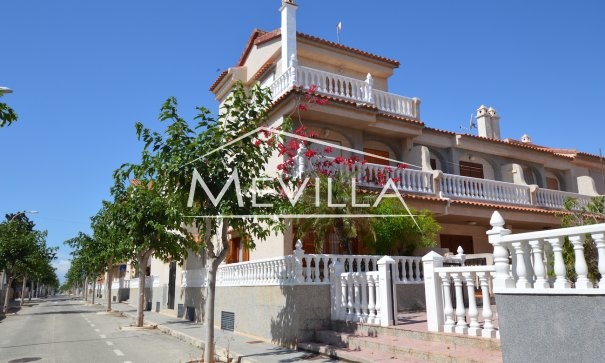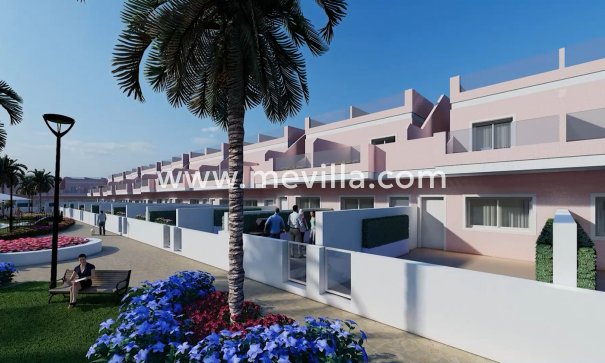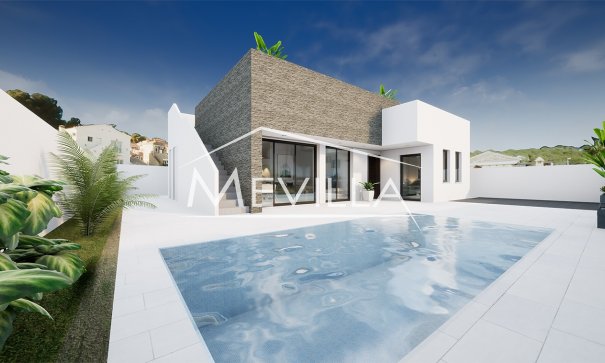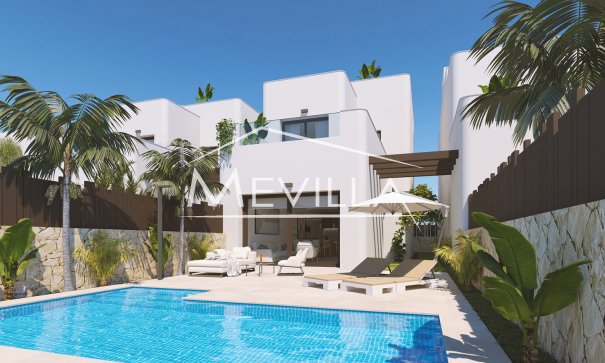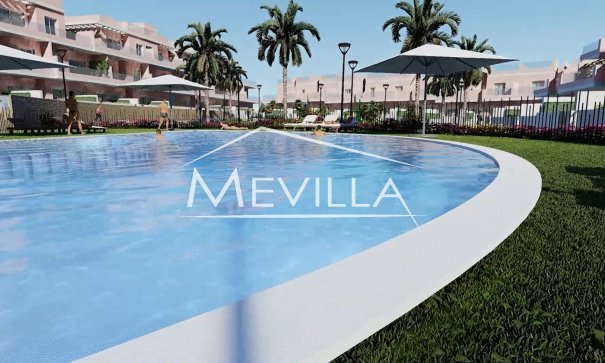Description
About Pilar de la Horadada, Costa Blanca, Spain
Pilar de la Horadada is a municipality in the province of Alicante, Costa Blanca, in the Community of Valencia, Spain.
It is located in the region of Vega Baja, bordering the Region of Murcia, being the southernmost municipality of the province of Alicante.
The origin of the name "Pilar de la Horadada" is due to the construction of the numerous watchtowers that during the reconquest were very common in the municipalities of the coast to sight the maritime approaches and to avoid the incursions of Berber pirates. One of these towers, the "Torre Horadada", was named after the rock where it was built, as it had a hole and was called the Peña Horadada, from which the term Campo de la Horadada evolved and later in the eighteenth century, and due to the patronage of the town of the Virgen del Pilar, the town changed its name to Pilar de la Horadada.
Location:
Due to its peculiar geographical situation, Pilar de la Horadada is isolated from the rest of the region to which it belongs, La Vega Baja del Segura. However, its proximity to the coast benefits the communications towards the coastal towns, both in the province of Alicante and in the nearby province of Murcia and the Mar Menor.
How to get to Pilar de la Horadada by road?
To access Pilar de la Horadada by road you can use both the N-332 road and the AP-7 Mediterranean Motorway, at exits 768, 770 and 774, as well as the regional road that links it through San Pedro del Pinatar and Torre de la Horadada. The town is almost equidistant between the cities of Murcia (54 km) to the northwest, Cartagena (49 km) and Alicante (68 km). Pilar de la Horadada is also connected to Orihuela via the CV-925 road and to San Miguel de Salinas via the CV-920 road.
How far is Pilar de la Horadada from the airport?
About travelling by plane to Pilar de la Horadada, it is very well connected with both the airport of Corvera, in Murcia (45 km) and with the airport of Alicante-Elche (62 km).
Can I get to Pilar de la Horadada by train?
The nearest train station is Balsicas-Mar Menor, in the region of Murcia and only 20 km away.
What to do in Pilar de la Horadada:
Pilar de la Horadada is famous for its beaches, which make a total of ten, seven of them with a Blue Flag and qualified with the "Q" for Quality, but there is not only a beach in this municipality, which if something is prized is to have all possible scenarios for the enjoyment of its inhabitants, honoring its motto, "Pilar de la Horadada, Sea and Mountain".
It has a small marina, where sailing lessons are given and which also has a wide range of activities and water sports. Likewise, the hiking and cycle tourism routes are also famous, covering the whole of the municipality's extensive geography.
Among its places of interest we should mention the Lo Romero Golf Course, which has 18 holes and is rated as one of the 10 best golf courses in Spain. It opened in 2008 and is relatively new to the Costa Blanca golf circuit. Among its particularities, the famous 18th hole, "the Island of Golf" in the Spanish Levant, has been named this way since its inauguration, since it is precisely on the 18th green, which is practically surrounded by water, where the player has an even greater feeling of depending only on himself to face the last putt. The sensation of living your personal adventure in a silent space, enjoying nature, isolated from the rest of the world. A sensation that starts from the moment you step on the first tee.
It is also important the gastronomy of Pilar de la Horadada where the offer is at the height that is expected in a coastal town of the Mediterranean, where the fish and the seafood is one of its fundamental tricks, but without forgetting the rest of the good viands that the Mediterranean kitchen offers, has a wide range of bars and restaurants of all kinds, one of the most famous is the restaurant "El Gallego" which is attended by many customers from all over the province, to enjoy its range of meat, fish and seafood of high quality.
In the context of the festivities, it is worth mentioning the Patron Saint's Day, which is celebrated in honour of the Virgen del Pilar from the 1st to the 21st of October, in which charangas and peñas stand out with their party stalls, float parades and the release of heifers. The multitudinous offering of flowers to the Virgin and the pañolada also stand out in these festivities. Also worthy of mention are the Summer Fiestas, on 30th July, commemorating the segregation of the municipality from the old Orihuela Town Hall, with a large firework display as the final touch.
The Pilareña Holy Week is also one of the oldest traditions in the region, with many steps and brotherhoods, where the carvings take special relevance for the quality, not in vain, Jose Sanchez Lozano (1904-1995), was born in Pilar de la Horadada, is the highest representative in the twentieth century of the current Spanish imagery based on the style created by Francisco Salzillo.
Weather:
The climate is of the dry Mediterranean type. In general, it is a climate with mild winters and somewhat hot summers. The average temperature is 18 °C and keeps the area in a kind of "constant spring", with soft breezes and the sun shining more than 3,200 hours a year. The dominant winds are from the northeast (gregal), southwest (leveche) and west (poniente).
Geography and History from Pilar de la Horadada
Traces have been found in Pilar de la Horadada since Roman times, with Thiar being a stopping point on the Via Augusta between Carthage Nova and Illici. It is also known that, in Roman times, Thiar was famous for making "Garum".
After the fall of the Roman Empire, various cultures have followed one another, with the arrival of the Visigoths, first, then the Arabs and later with the reconquest by the Christian kingdoms, turned the population of La Horadada into a melting pot of races and cultures.
Already in modern times and from the 70's with the arrival of the tourism the multicultural character of the population has been accentuated much more, many of the Scandinavian, English, German or Belgian travellers who came to Pilar de la Horadada as tourists, finally, have stayed to live definitively in the municipality.
In the northern end of the municipality is located the Sierra Escalona, with its peak Alcores, which is the maximum altitude of Pilar de la Horadada, with 375 m above sea level. Thus, the municipality has a varied morphology, from beach to mountain. As far as the water courses are concerned, there are three main ones: the River Seco and the River Nacimiento, both originating in the aforementioned Sierra Escalona and with a route of about 15 linear kilometres to their mouths on the beaches of Pilar de la Horadada. The third consists of the urban wadi, channelled by the Generalitat Valenciana in 1995, as a result of the disastrous flooding that the town centre suffered in 1987.
In Pilar de la Horadada, both on the coast and inland, we discover large areas of great ecological and scenic value. In its most accessible environment we can delight with a riverbed enabled for environmental education, a mountain range of great landscape and natural relevance, mountains covered with pines where we find oaks and strawberry trees, wide beaches of fine sand and small coves with rich and varied sea beds.
Facilities in Pilar de la Horadada
Pilar de la Horadada has a population of more than 20 thousand inhabitants and as a consequence has all the services and facilities necessary to offer all the crucial services required for modern life, several shopping centres, including shops with brands specialising in food products from the countries of the European Community and other parts of the world.
There is a variety of bars and restaurants that satisfy all international tastes and flavours, and the main street, which runs the length of the whole town, is famous for its concentrated selection of haute cuisine restaurants and informal bistros.
Medical clinic, veterinary centres, a total of three pharmacies, banks, schools and institutes satisfy the needs of the inhabitants of a modern and dynamic town.
As far as public transport is concerned, there is a bus service that connects the town with Torrevieja or Murcia almost every hour of the day and stopping at every town along the way.
There are also local buses that connect the various districts of Pilar de la Horadada, such as: Pinar de Campoverde, Torre de la Horadada or Mil Palmeras, with stops at the golf course of Lo Romero, El Mojón or the beach of Las Higuericas.
The taxi transfer to Alicante-Elche airport costs 70 euros per vehicle (each way, 4 people max.), with an estimated journey time of 55 minutes. A similar transfer to Murcia-Corvera airport costs around 55 euros per vehicle.
Properties in Pilar de la Horadada
After Pilar de la Horadada ceased to be a hamlet of Orihuela to get its own council, and after several years of waiting, thanks to the struggle of the Pro-Council Commission, urban development and tourism was increased exponentially, especially through second homes in the tourism field, gradually, larger real estate developers moved to the area during the years 2001 and 2002 to offer higher quality properties and more affordable.
Although the new construction works have transformed the urban landscape of the municipality, it is true that there are two completely different areas, the old part or centre of the town, with old farm houses transformed into single-family houses or blocks of buildings, and the area of residential neighbourhoods of single-family villas for sale with much more space between neighbouring properties.
More recent style buildings offer villas on inevitably smaller and more manageable plots, and a variety of townhouses and apartment blocks for sale in Pilar de la Horadada, Costa Blanca. Typically offering higher value at the expense of space, these newer properties typically require less maintenance than older style properties and are built to meet modern building standards.
Thanks to a well designed and thoughtful urban plan, the newest part of the village is well developed, interspersed with parks and green areas that are meticulously maintained by the town hall staff.
Summary
Pilar de la Horadada and its municipal district are very popular with tourists looking for more than just sun and beach, and although today most of the population is indigenous there is a cultural compendium thanks to British, German, French, Dutch and Scandinavian expatriates settled in the community.
The village will attract those looking for green areas, greater natural beauty and the great open landscapes facing the sea. Overseas property buyers who do not want to feel that their home is just part of a sprawling urban jungle will find Pilar de la Horadada very attractive and aesthetically pleasing.
To live in Pilar de la Horadada is to have the feeling of a global and cosmopolitan village while at the same time you can experience the natural and nearby Spain that flees from the heavily commercialised areas normally associated with the life of people coming to our country from other countries.
Living close to the splendour of Mediterranean nature is one thing, but living within it is something that Pilar de la Horadada offers in a substantial way.
Start looking for your perfect home for sale in Spain, click here to see all the properties available in Pilar de la Horadada right now.

















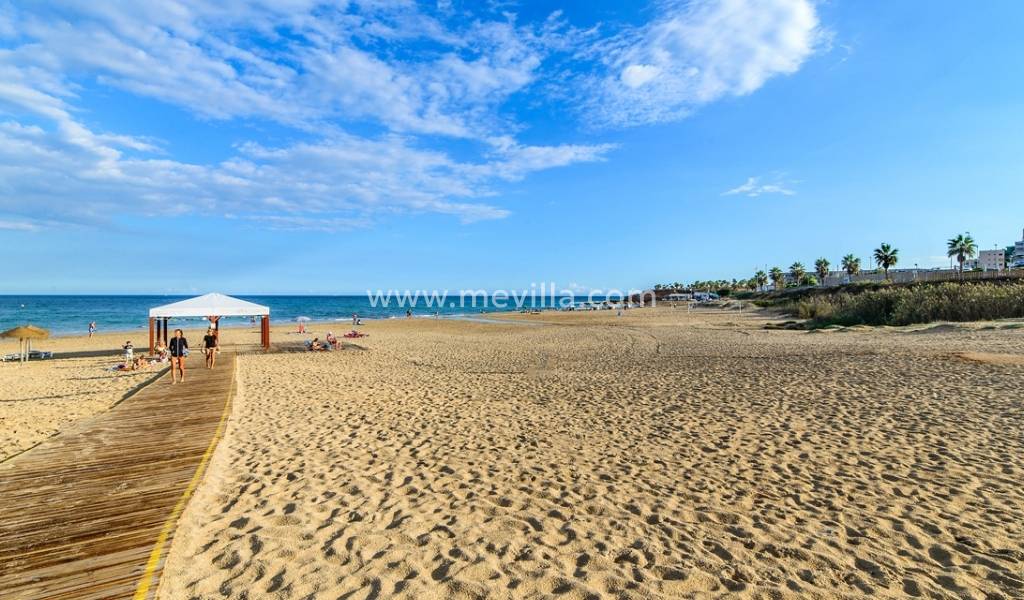
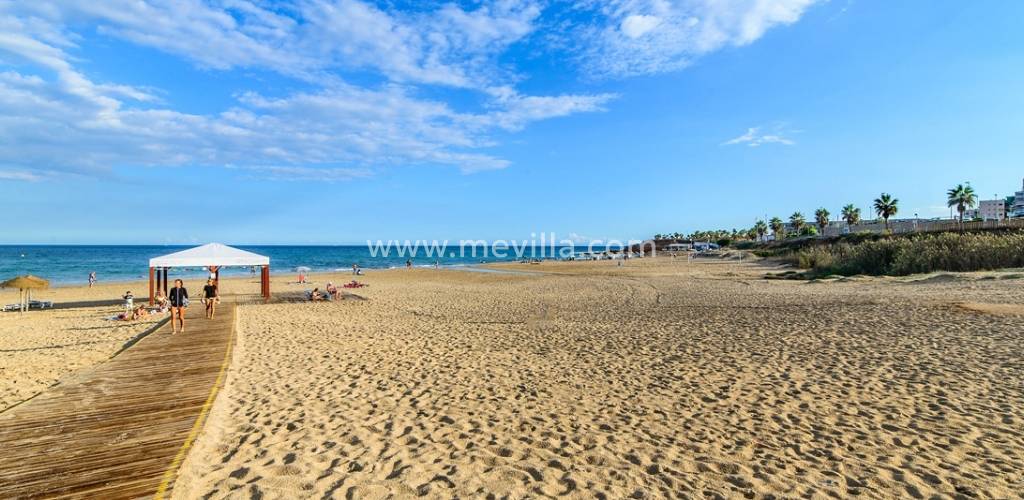
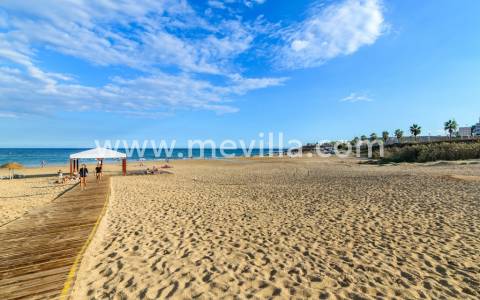
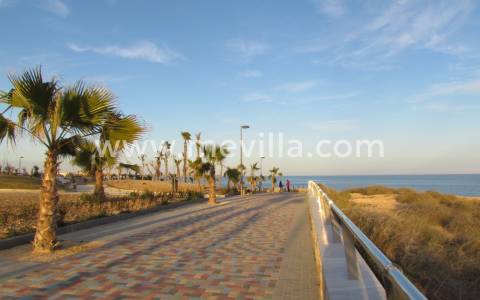
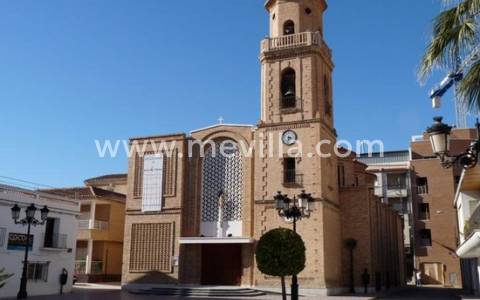
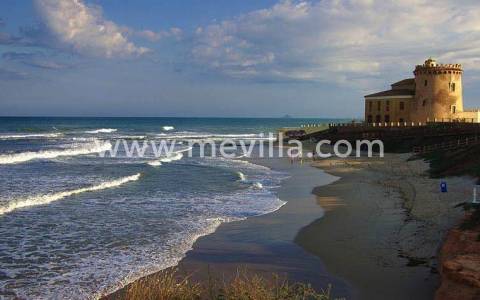
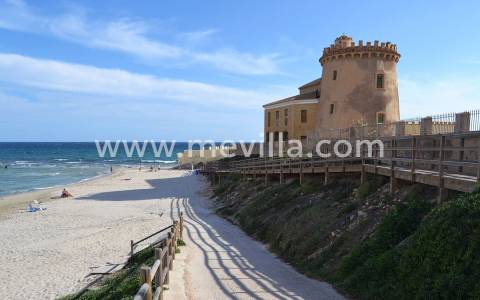

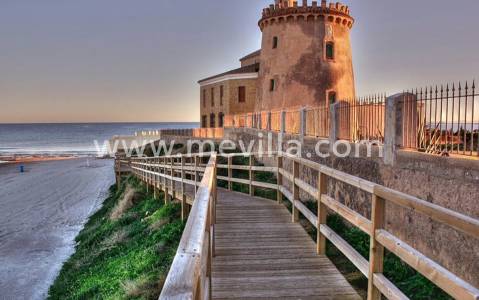
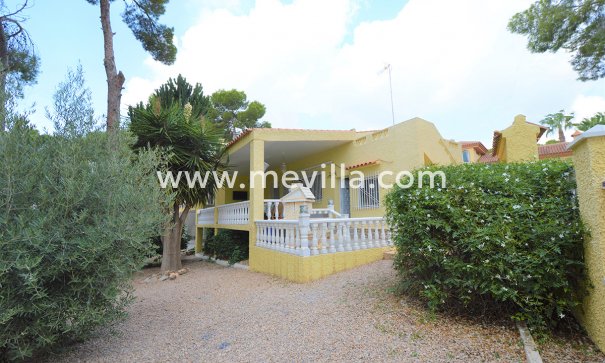
 Pilar de la Horadada · Pinar de Campoverde
Pilar de la Horadada · Pinar de Campoverde






